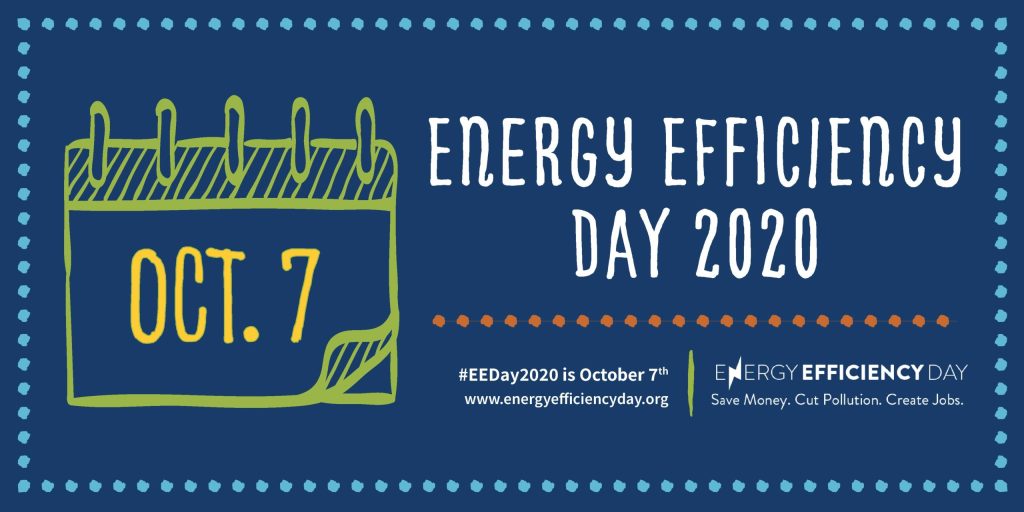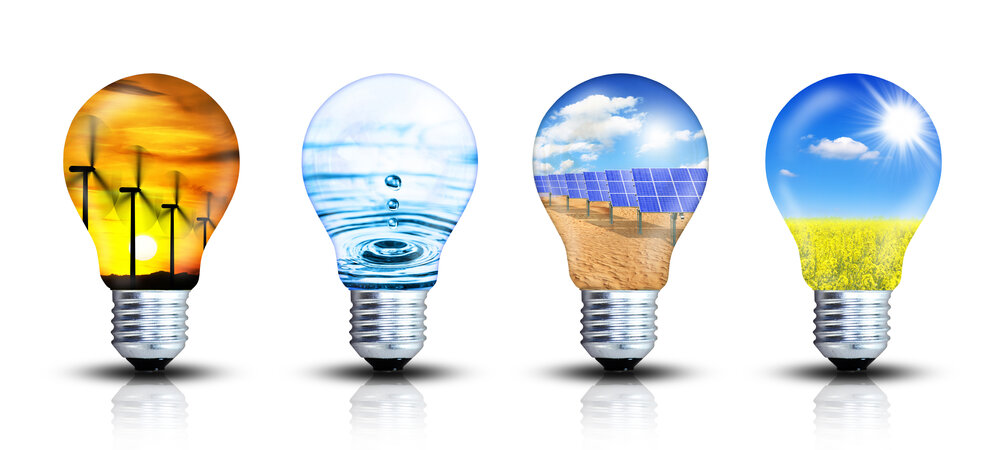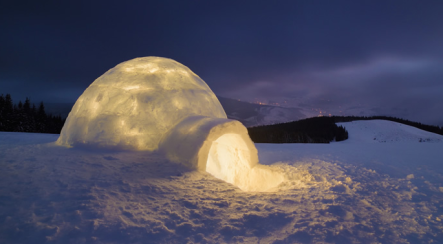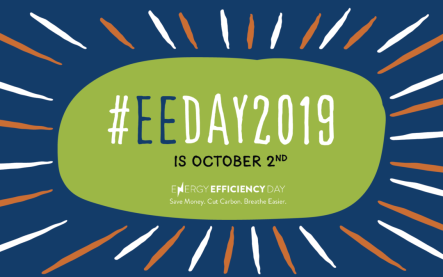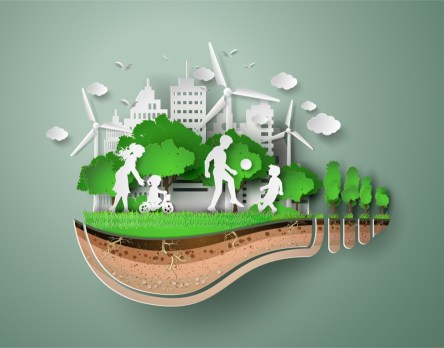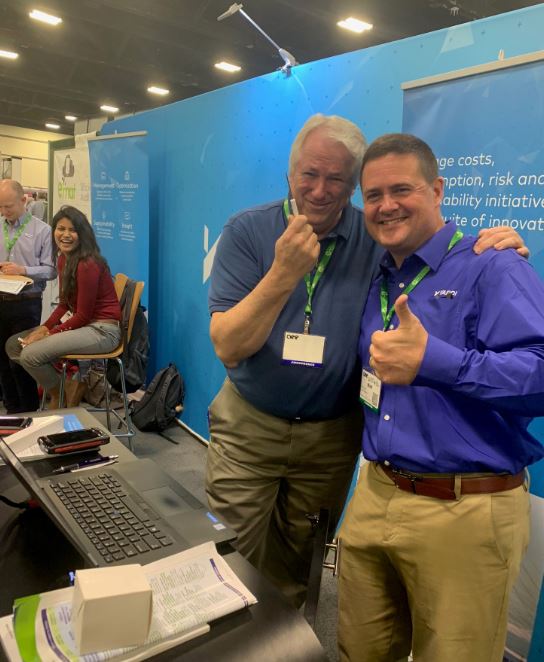How can property owners meet the growing demand for environmental, social and governance performance accountability from residents, tenants and investors? Yardi client representatives who lead ESG reporting for their organizations and an official from GRESB, the ESG benchmark for real estate assets, recently offered some insight. Juliette Apicella, director of sustainability for Atlanta-based apartment owner and manager Gables Residential Services, was one of three industry experts who appeared on a YASC Global panel. “More investors are interested in details about our ESG policies and achievements,” she said. That prompted the company to use ESG as “a tool that helps us monitor our assets’ environmental performance as a driver of returns.” Gables has stepped up its recruitment of employees, partners and residents in the effort to incorporate environmental priorities into its operations. Another panelist, Jennifer Plesnicar, vice president for Chicago-area industrial developer and manager CenterPoint Properties Trust, sounded a similar note: “ESG is becoming more important each year” among multiple company stakeholders. “How a company responds to ESG expectations can impact operations ranging from borrowing rates to talent attraction and tenant retention,” she said. The widespread attention to ESG is “pushing the real estate industry forward,” said the third panelist, Dan Winters, head of Americas for GRESB, which collects and validates data and disseminates it to more than 150 institutional real estate investors around the world. “Getting accurate ESG data, rolling it up to the portfolio level and sharing it with the industry increases insight for a company, which appeals to its institutional investors, and also provides better outcomes for GRESB participants.” Overcoming data gathering challenges All panelists agreed that the principal challenge to managing an organization’s ESG performance is gathering, tracking and disseminating the consumption data necessary to formulate ESG actions. “A lot of...
22 Energy Outlook
Favors Renewables
Global energy demand surpassed pre-COVID 19 levels in 2021. Energy was the top-performing S&P 500 sector that year. With energy demand still on the rise, the energy sector stands to grow even more in 2022. The Balance Sheet sampled expert predictions of what’s ahead for renewables and the rest of the energy industry in 2022. We will keep tabs on key developments throughout the year. Economist Intelligence, a policy analysis and consulting group, predicts that global energy consumption will rise by 2.2% in 2022 as economies recover from the pandemic. All types of energy except nuclear power will benefit, although “energy companies will need to undertake an urgent review of their strategies next year, as governments and investors ramp up pressure to cut emissions.” Kathryn Downey Miller, president of energy industry analysis firm BTU Analytics, echoes that assessment. “Despite a strong profit outlook heading into 2022, enormous pressure is coming from providers of capital and other stakeholders to evolve business models for the new energy economy,” she said in an editorial published in December. That pressure is a principal reason that “renewable energy growth is poised to accelerate in 2022, as concern for climate change and support for environmental, sustainability, and governance considerations grow and demand for cleaner energy sources from most market segments (residential, commercial, and industrial consumers) accelerates,” according to an energy industry outlook report prepared by Deloitte. Renewable generation expands Renewables were the only energy source for which demand increased in 2020, according to the International Energy Agency. Renewable electricity generation in 2021 expanded by over 8% in 2021. Record levels of wind and solar generation additions are expected to come online in 2022, according to S&P Global Market Intelligence, which studies energy markets. The adoption of renewable energy sources will be...
Water Wins
Tap the Savings
The cost of water can be deceptively low — it doesn’t include the energy expenses of pumping and heating the water. When you evaluate water and energy efficiency together, you’re in a better position to maximize resource and cost savings. Multifamily companies can get some quick wins with minimal effort and no (or low) capital expenditure. All you need to do is make some changes to operations and maintenance practices along with minor retrofits or replacements as needed. The Environmental Protection Agency’s (EPA) WaterSense program recently shared strategies to save energy and water in the webinar “Reducing Costs with Quick Water Wins.” WaterSense is a voluntary program launched by the EPA in 2006 that provides a simple way to identify water-efficient products, programs and practices. In the webinar, the EPA’s Tara O’Hare highlighted the connection between water and energy, often referred to as the energy-water nexus, since every gallon of water has an energy footprint for pumping, moving, heating and treating water. To keep costs low, WaterSense offers the following tips: Review all bills for accuracy Check facility rate class and water meter size on bills Work with your local utility to correct any problems Identify leaks and waste O’Hare said that energy and water leaks linked to continuously running water comprise approximately six percent of water use and that potential financial losses from water such as a drip irrigation malfunction or an unattended water hose at night can amount to $4,300 or $16,000 per year, respectively. How can you make sure this doesn’t happen at your property? Conduct a walk-through to identify leaks (look for puddles and drips) and ask for the vigilance of employees and tenants to help identify leak and waste indicators as soon as they occur. Follow best practices You’ve...
ENERGY STAR Awards
Wellspring of Value
In March, the U.S. Environmental Protection Agency awarded Yardi one of 191 ENERGY STAR® Awards for 2020 for national leadership in creating cost-saving energy efficient solutions. The company earned its second consecutive ENERGY STAR Partner of the Year Award, EPA’s highest level of recognition, for helping clients benchmark energy and water usage, widely promoting ENERGY STAR resources and earning ENERGY STAR certification for its corporate headquarters. And what did the other 190 award winners achieve? Their initiatives show that organizations in every sector of the economy – whether a real estate services leader, industry trade association, toothpaste manufacturer, baked goods pacesetter, top-tier university, venerable automobile manufacturer or aerospace behemoth – can find ways to protect the environment and save energy. Here’s a sampling of the most recent ENERGY STAR Award winners: Global commercial real estate services provider Cushman & Wakefield gave its tenants more than 20 presentations on implementing energy efficient practices and using ENERGY STAR-certified equipment. The company also trained vendors, brokers and building contractors in energy management goals and in using ENERGY STAR as a market differentiator. Cushman & Wakefield achieved ENERGY STAR certification for 130 buildings in 2019. BOMA International, a trade association for commercial real estate professionals, completed Year 2 of its W2 Challenge, an initiative to benchmark water use and waste output that was built with the support of a grant from Yardi. The organization also continued its ENERGY STAR-related education and recognition programs in 2019 and prominently featured ENERGY STAR in its videos, industry conferences, magazine, e-newsletters, webinars and social media. Bimbo Bakeries USA, whose brands include Thomas’, Sara Lee, Arnold and Entenmann’s, reduced energy use by 2.3% from the previous year and became the first major baking company to purchase renewable energy for 100% of its electricity...
Power Plays
Energy Efficiency Day 2020
While energy efficiency is important every day of the year in any economy, 2020 is presenting unique challenges along with big opportunities for companies and individuals alike and now is a great time for everyone to take control of energy use and utility costs. Using energy efficiently is the simplest way to lower utility bills, improve air quality and reduce environmental impact as part of a larger concerted effort. Driven by the mission to save money, cut pollution and create jobs, Energy Efficiency Day on October 7, 2020, is a collaboration of dozens of energy efficiency advocacy groups around the U.S., including the American Council for an Energy-Efficient Economy (ACEEE), Advanced Energy Economy, Alliance to Save Energy, Natural Resources Defense Council, the Regional Energy Efficiency Organizations and many others. As we come together for the fifth annual Energy Efficiency Day, the event website offers some great tips to deal with pandemic-related utility costs now and through the summer. A costly lockdown While working remotely and spending more time at home is helping to stop the spread of COVID-19, it’s not helping most people’s wallets. For areas in a home that need improvement to increase energy efficiency, workers usually need inside access. During a pandemic, that kind of exposure carries serious safety concerns. If you’re not ready to let utility pros into your home, what can you do? Consider a virtual energy audit. Check with your local utility companies to find out if they offer this convenience in your area. There are also some things you can do yourself to increase energy efficiency and stop the waste. Following are a few highlights and takeaways from the article Pandemic Hurts Efficiency Jobs But You Can Still Make Energy-Saving Upgrades. Seal the gaps Check around windows and doors as well as mail slots, electrical outlets and window-mounted AC units. Wherever you find a crack or gap, seal it with caulk or weather stripping. Replace filters Keeping your furnace and air conditioner filter clean will ensure they aren’t working harder than they need to — which saves you money, lowers emissions and extends the life of your equipment. Lighten up your bills Switch your bulbs to LEDs, which use up to 90% less energy to deliver the same amount of light as incandescent bulbs — and they last up to 25 times longer. Save water With a high efficiency showerhead, you can save more the 2,000 gallons of water per year, most of which is hot water, so you also get the savings on heating. While you’re at it, install an aerator in your kitchen sink — a pressure compensating model ensures plenty of flow power while it reduces water use. Want to learn more? Get the scoop on ways to save on your next energy bill for tips including ENERGY STAR® appliances and how you can take part in Energy Efficiency Day. For property managers and owners looking for ways to gain control over energy consumption and reduce costs, join a free webinar on energy solutions brought to you by Yardi, named an ENERGY STAR Partner of the...
Pandemic-Inspired
Tech Innovations
“To effect change, there must be a stimulation of a magnitude that means companies cannot do anything but make bold decisions to survive. COVID-19 is that magnitude.” — Stuart Carlaw, chief research officer for technology analysis firm ABI Research Amsterdam-based consumer trend firms TrendWatching and Business of Purpose created COVID Innovations to track technology innovations arising from the pandemic. Here’s a summary of some of the projects listed on the site. Japanese start-up Donut Robotics has devised a smart mask called C-Mask. It can be worn over fabric-based masks and connects to an app via Bluetooth, enabling it to transcribe speech to text messages that are sent via the user’s smartphone. It can also translate from Japanese into eight other languages. After debuting C-Mask in Japan in September, Donut Robotics is eyeing the U.S., Europe and China as potential markets. Meanwhile, Detroit-based Redcliffe Medical is marketing its own mask design. LEAF is a transparent device composed of medical-grade silicone that promotes safety while keeping the wearer’s identity, lip movements and facial expressions visible. It’s the first FDA-registered mask with N99-standard air filtering abilities and includes an antifogging feature. Can ultraviolet light provide a line of defense against the coronavirus in warehouses, schools, restaurants, supermarkets, offices and other venues? MIT thinks so and created a robot designed to disinfect spaces by emitting UV light. It’s already been used successfully at the Greater Boston Food Bank. A 3D camera helps the device navigate around obstacles while a 2D device measures distances by illuminating targets with light. Another robot, StrikeForce, comes from XENEX Disinfection Systems in San Antonio, which claims its invention can destroy the novel coronavirus in 2 minutes. The company’s LightStrike Germ-Zapping Robots (a trademarked name) uses a xenon lamp to generate bursts of high intensity ultraviolet light. Restaurants, car dealerships, hotels, office buildings and gyms are among the potential candidates for StrikeForce, which is available on a limited basis in Texas, according to COVID Innovations in June. India’s TechMax hopes to ease workers’ transition back to multi-story office environments with its Sparshless solution, which allows touchless elevator unit operations. Summoning the elevator is as simple as placing your hand near a reader. Once inside, just point your finger at a button from about a half-inch to three-quarters of an inch away. Many people have stayed true to their favorite eateries with pick-up and take-out orders. Is it possible to create a similarly contactless dine-in experience? Pasadena, Calif.-based FreshBytes is one tech firm that thinks so. In June, the online ordering system provider, which claims to be the only company that allows restaurants to update their dine-in menus directly from a mobile phone, announced a system that lets customers scan a QR device to view the menu, order and pay directly from a mobile device, with the guest order automatically printed in the kitchen. There’s no exchange of pens, paper or payment cards, and guest turnover is faster. Another California enterprise technology platform provider, Presto, says its free Contactless Dining Kit received orders from more than 5,000 restaurants in five continents within two weeks of its launch in late May. And in Europe, British engineering firm Arup designed modular “parklets,” outdoor seating areas made from hardwood and screened from each other by plants and acrylic glass that let restaurant patrons enjoy onsite dining while maintaining social distances. They’re part of a “Liverpool Without Walls” project designed to help that city’s restaurants reopen. The first parklet was opened in July. Microsoft responded to spiraling global unemployment with a skills initiative designed to bring digital skill learning opportunities to 25 million people by the end of the year. The software giant will leverage its LinkedIn and GitHub resources to identify in-demand jobs and the skills needed for them, provide free access to learning content, and deliver low-cost certifications and free job-seeking tools. Yardi responded to the pandemic with its own set of dedicated...
ARPA-E Update
Energy Research
Earlier this year, The Balance Sheet summarized some energy technology projects sponsored by the Advanced Research Projects Agency-Energy (ARPA-E), which carries out R&D for the U.S. Department of Energy. Here are a few more active projects. Warm and cool on demand Syracuse University seeks to improve comfort for office building occupants with a near-range micro-environmental control system. The system would store the cooling produced by the compression system at night and release it as a cool breeze of air to make occupants more comfortable during the day. And when heating is needed, the system would draw heat from its phase-change material and deliver warm air. Syracuse claims that the control system, combined with an expanded set-point range, could save more than 15% of the energy used for heating and cooling while maintaining occupant comfort. “If successful, [the control system] could increase energy efficiency, reduce emissions produced by powering traditional HVAC systems, and enable more sustainable heating and cooling architectures for energy-efficient building design.” Building breath test Specialized sensors tip off a building’s HVAC system that carbon dioxide-exhaling people are around and need ventilation. A Purdue University team is working on small-scale sensing systems that would use mass and electrochemical sensors to detect the presence of CO2. The Purdue team believes that combining two unique sensing technologies into a single package for monitoring CO2 levels could reduce building energy use by nearly 30% without sacrificing occupant comfort. Chopping home energy costs Meanwhile, researchers at Texas A&M University are looking at new detection solutions for residences, specifically enhanced pyroelectric infrared sensors that track occupancy and activity. Whereas such detection sensors traditionally can only notice people in motion, Texas A&M’s proposed system would identify non-moving heat sources. Quantitative information on movement would come from an “optical chopper”...
Beat the Cold
Winter Energy Tips
Those summer tees and shorts are but a memory. With fall here and winter on deck, how do you stay comfortable at home without spiking your utility bills? Here’s a compilation of tips from the U.S. Department of Energy and other sources. Study up. Conduct an energy audit to find out where you can save and invest for long-term energy savings. Don’t miss sunshine. Open curtains on your south-facing windows during the day to allow sunlight to naturally heat your home. Close them at night. End the draft. According to energy services marketplace Choose Energy, up to 30% of a home’s heat can escape through low-efficiency windows. Cold air can lead into a home through cracks and gaps in windows and doorways. Covering windows and sliding doors with clear plastic film can cut about 14% from your heating bill. Install tight-fitting, insulating drapes or shades on windows that still feel drafty. Seal any gaps with caulk or weather-stripping. Check the equipment. Have your heating system serviced. Replace furnace and heater filters as needed. Air filters should be replaced monthly. Clean the flue vents on wood- and pellet-burning heaters. Reset the temp. When you’re home and awake, set your thermostat as low as possible to remain comfortable. Turn it back 10° to 15° at nighttime and when you’re gone. A smart or programmable thermostat makes this easy. Get a smart ’stat. Almost half of monthly energy costs are controlled by your thermostat, according to Efficiency Vermont, and Choose Energy says a programmable thermostat can cut heating costs by up to 12%. Cut your losses. Close your fireplace damper when not in use to keep warm air from escaping up the chimney. Install tempered glass doors and a heat-air exchange system for the fireplace. Add caulking around the fireplace...
Energy’s Future
Looking to 2050
What’s the future of worldwide energy consumption? A recently published study of international energy markets through 2050 offers some clues. The U.S. Energy Information Administration (EIA), the U.S. Department of Energy’s statistical and analytical agency, conducts annual long-term assessments of world energy markets. The EIA characterizes its compilation of current trends and relationships among supply, demand and prices in the future as “a reasonable baseline case to compare with cases that include alternative assumptions about economic drivers, policy changes or other determinants of the energy system.” Here are some projections from International Energy Outlook 2019: Global consumption World energy consumption will grow nearly 50% between 2018 and 2050, with most of this expansion coming from regions where strong economic performance is driving energy consumption. Asia represents the largest and fastest-growing region for energy consumption. The shift of manufacturing centers to Africa and South Asia, especially India, will spur energy consumption. The industrial sector, including mining, manufacturing, agriculture and construction, will account for more than 50% of global end-use energy consumption between 2018 and 2050. Buildings’ share of the world’s delivered energy consumption will increase from about 20% in 2018 to 22% in 2050. Renewable energy Renewables (including hydropower) will be the fastest-growing source of electricity generation until 2050, rising by an average of 3.6% per year. Wind and solar will account for over 70% of total renewables generation by 2050. Electricity generation from wind and solar sources will represent renewable energy sources’ biggest increases until 2050, reaching 6.7 trillion and 8.3 trillion kilowatt-hours (kWh), respectively, as these technologies become more cost competitive and receive support from government policies in many countries. Worldwide renewable energy consumption will increase 3% per year to 2050. Nuclear consumption will increase 1% per year. Hydropower’s share of renewables generation will fall from 62% in 2018 to 28% in 2050 because resource availability in Organization of Economic Cooperation and Development (OECD) countries and widespread environmental concerns limit the number of new mid- and large-scale projects. (OECD is a 36-member group of countries with market economies.) Electricity Electricity generation will increase 79% until 2050, with consumption increasing in all end-use sectors. On average, consumption of electricity in more-developed OECD economies and developing non-OECD economies will grow 1% annually until 2050, while non-OECD consumption will grow 2.3% annually. Electricity will remain the main source of marketed energy consumption in the residential sector. Its use will grow by 2.5% per year globally as rising populations and standards of living in non-OECD countries increase demand for appliances and personal equipment. The transportation sector will consume more electricity as more plug-in electric vehicles enter the fleet and as electricity use for rail expands. Petroleum and other liquid fuels will remain the principal transportation fuel, however. Petroleum and liquids As a share of primary energy consumption, petroleum and other liquids will decline from 32% in 2018 to 27% in 2050. On an absolute basis, liquids consumption will increase in the industrial, commercial and transportation sectors and decline in the residential and electric power sectors. Residential natural gas consumption will grow by 0.7% per year, influenced by increasing use of the fuel for heating. Read the full International Energy Outlook 2019 report. Learn how Yardi technology contributes to energy conservation and sustainability...
Energy Efficiency Day...
It’s Happening Now
If encouragement to “save money; cut carbon; breathe easier” seems more prominent than usual where you live and work, it’s because today is Energy Efficiency Day, and that’s the key message the event’s organizers are promoting. A nationwide alliance of energy efficiency advocacy groups sponsors Energy Efficiency Day to share “tips, tools and stories that promote the multiple benefits of energy efficiency, from lower costs to healthier homes,” as stated in the event’s website. About 450 local governments, universities, organizations, corporations and utilities are hosting an array of activities including expos, energy-saving device installations, free energy assessments and symposia with thought leaders. Organizers of Energy Efficiency Day, an annual occurrence since 2016, encourage people to stage their own events, such as a “treasure hunt” check of home appliance, lighting and insulation efficiency, and to share their experiences from the day (#EEDay2019). Technologies that lower energy bills and make properties more comfortable are part of Energy Efficiency Day’s focus—and have long been a staple of Yardi’s business. The Yardi Pulse Suite, an integrated set of software solutions, supports sustainability efforts by maximizing efficiency across all property types. “October 2 is Energy Efficiency Day. But efficiency is year-round,” says the event’s website, which pretty well summarizes Yardi’s approach as well. Every month last year, for example, the company benchmarked more than 1,700 buildings across 47 client portfolios in 27 compliance jurisdictions in ENERGY STAR® Portfolio Manager®. A grant to the BOMA Water and Waste Challenge helped property owners and managers improve their water and waste management practices. Ongoing leadership, innovation and commitment to environmental protection earned Yardi designation as an ENERGY STAR Partner of the Year. The company joined GRESB’s Global Partner program this year as a sustainability consultant and solution provider. Yardi promotes energy management...
Energy Automation
Pinnacle Uses Yardi Energy
Dallas-based multifamily community manager Pinnacle sought to reduce utility late fees and increase vacant utility cost recoveries at 170,000 residential units that it manages. “We needed to automate the entire process—payables, receivables, consumption data analysis and reporting that drilled down to a granular level of detail,” said Nicole Ellery, the company’s ancillary performance manager. Doing all this required replacing its cumbersome manual utility consumption tracking and billing with the Yardi Energy Suite. One element of the suite, Yardi Utility Expense Management, receives, validates and completes payments for Pinnacle’s utility bills. Another part, Yardi Utility Billing, monitors and bills residents for their utility consumption, which helps the company recover vacant unit costs, monitor usage, forecast utility revenue and cut waste with consumption alerts. How has the Yardi Energy Suite worked out for Pinnacle? The bottom line, Ellery said on a utility expense management panel at the most recent Yardi Advanced Solutions Conference (YASC), is “lower late fees across the board.” That happened because the comprehensive solution for utility billing, energy management and submeter data administration helps the company “track how properties are performing with line-by-line data down to the individual meter level as opposed to only invoice data.” “When we onboard a new property, we can see red flags such as high consumption on a meter and follow up with an investigation,” Ellery said. “Our property managers and accountants can drill down to each general ledger account and invoice if anything looks off and see what’s going on. We can see gradual increases in consumption and process invoices as soon as they come in.” She added, “We have saved thousands of dollars every year by nearly eliminating late fees. The suite vastly simplified our vacant unit recovery process, so it maximizes income too. We’d be...
Climate Cleanup
New NYC Emissions Law
The Climate Mobilization Act is a package of legislation designed to drastically reduce carbon emissions from New York City’s commercial properties. It covers everything from closing high emitting power plants and installing renewable energy sources to limiting emissions from buildings of over 25,000 square feet. A major component of the proposal, Local Law 97 (formerly Bill 1253), was approved by the city council in April 2019 and focuses on greenhouse gas emissions limits for existing buildings. We asked Brian Fridkin, a Yardi Client Services Division team leader in Yardi Energy, for an analysis of LL 97. Q: How will this bill impact Yardi clients in New York City? Fridkin: Many clients who own or manage any commercial property of over 25,000 square feet will have to comply with the law’s carbon emission limits starting in 2024. That’s five years away, but they need to act now to meet the deadline. To comply, property owners will have to calculate their building’s carbon limit, which is based on the square footage of their building. They will then have to calculate their current emissions based on the emission coefficients set in the law. To avoid penalties, they will have to make reductions in the next five years that equal the difference between their emissions and limit. What’s more, the emission limits change every five years. The limits for 2030-2034, for example, are about half of those for 2024-2029. That’s good because property owners can ease into the changes, but they must constantly prepare for upcoming limits. Additionally, there are minimum requirements that a building must meet by 2024, which include adjusting temperature set points for heat and hot water, repairing system leaks, insulating pipes, ensuring steam traps are operating correctly, complying with lighting standards and weatherizing windows....
Utility Expenses
Savings for Seniors
Want to make your property more appealing to prospects? Keep their bills low. Senior living clients love to save money. Even more so, they love knowing that their housing provider is taking additional lengths to make saving money easier. By focusing on utility expenses, you’re creating value and enticing customers with cost savings. Cost savings on utilities aren’t traditionally sexy in advertising. It’s hard to make submeter installation look exciting. But money saved has proved to be appealing to seniors, especially when the savings are complemented with improved efficiency and high-quality services. Sustainability Matters Baby Boomers value sustainability. A 2018 High Tide Technologies survey of 2,000 adults discovered that Baby Boomers are more frugal than younger generations. Boomers consume less water and electricity. They’re also more likely to recycle, compost, and be food waste conscious. A separate study lead by Pew Research suggests that 36 percent of Boomers have molded lifestyles that protect the environment “at all times.” Only 12 percent of Gen Xers and Millennials report similar sentiments. The two bodies of research indicate that seniors are looking for more than fancy meal plans. They are seeking housing providers that are concerned about the welfare of their finances and the environment. So how do businesses deliver savings to residents? We sat down with Akshai Rao, vice president of energy and procurement at Yardi, to learn more. The Need for New Strategies While lowering overhead costs benefits businesses, that savings can be passed on to residents. Satisfied residents improve the bottom line, offering a win on two fronts for business owners. “Focusing on reducing consumption doesn’t just affect the bottom line, it may make you more desirable to potential residents,” says Rao. But a recent Argentum survey reveals that 49 percent of executives viewed...
What’s Your Energy Strategy?
Get These Five Benefits
Did you know that the average commercial building wastes 30% of the energy it consumes? Or that energy costs will rise as much as 60% in areas of the U.S. by 2028? It’s true, according to an analysis and calculation of Yardi consolidated property data. These facts should be red flags for property management companies without an energy strategy in place. Luckily, adopting an energy strategy is not as daunting as it may seem. In fact, taking incremental steps towards a comprehensive strategy can generate measurable savings in a matter of weeks with a relatively modest investment. Here are five reasons why an energy strategy is good business: Reduced costs Operating expenses such as utilities and maintenance are easy first targets for reduction through an energy strategy. By taking advantage of usage data and trends, property managers can quickly identify excessive usage, lower maintenance costs and identify benchmarks for energy consumption across a portfolio of properties. Increased value Assets that cost less to operate and generate higher rents quickly become more valuable. An energy strategy promotes both savings and revenue by reducing operating costs, reducing the need for rental concessions, making properties more marketable and, as a result, increasing potential net operating income. Efficient accounting The benefits of automating property management processes such as payment processing, procurement, vendor management, etc., are now viable for energy management. Gone are the days of a stack of paper utility bills waiting to be opened and paid. Automated utility expense management sends digital invoices to accounting staff and mines data from smart metering equipment to validate usage. With a relatively low upfront investment, property managers can reduce duplicate payments, avoid late fees and be confident that their utility spend is accurate. Happy tenants Doing business in a building that is LEED certified or meets ENERGY STAR® benchmarks can make a tenant feel proud, comfortable and socially responsible. They’re also less likely to call for maintenance with modern, energy efficient equipment servicing their building. That satisfaction reduces tenant turnover and increases competition for your space. Happy investors A successful energy strategy demonstrates to investors that your organization is proactively maximizing occupancy and revenue, and minimizing operating expenses. It’s also a great way to reassure investors that your properties are working to achieve local, state and federal government energy conservation goals, as well as boosting Environmental, Social and Governance scores for socially conscious investors. Need help getting started? Start with a focus on utility expense management as an approachable first step with low upfront investment required. From there, you may take bigger steps, such as energy intelligence at the property level with real time metering, ENERGY STAR benchmarking and prescriptive alerts for any property in your portfolio. The next level of investment is characterized by advanced energy automation in HVAC equipment, fault detection, diagnostics and demand management. No matter which level of strategy you take, the potential return on investment is tangible and may be evident as soon as your next utility invoice. Yardi Pulse clients have seen as much as 5% annual savings in energy costs with the first two incremental steps alone (utility expense management and energy intelligence). Annual energy savings of up to 15% or more are expected for properties that implement further energy automation measures. If you are a current Yardi Voyager user, contact our team for a complementary consultation. We’ll do an analysis to compare your costs with benchmarks. It’s a simple way to get an idea of the potential savings that an energy strategy can deliver to your...
Enlightened
Get Smart with Energy Facts
Enjoy some nuggets of energy intelligence courtesy of FactRetriever.com, Danish critical global challenges tracker The World Counts, the U.S. Energy Information Administration, and energy and home services provider British Gas. Humans began using energy sources other than fire about 5,000 years ago. In 1807 English scientist Thomas Young became the first person to use the word “energy” in the modern sense. The U.S.’s first natural gas well was dug in Fredonia, N.Y., in 1821. The first oil well followed in Pennsylvania in 1859. Thomas Edison built the first commercial central power plant. The Pearl Street Power Station in New York City sent electricity to more than 80 buildings in 1882. It served more than 500 customers within two years. Seventeen percent of U.S. electricity generated in 2017 came from renewable energy sources such as solar, wind and geothermal power. Biomass and waste fuels accounted for about 1.6% of U.S. electricity in 2017. The U.S. produces the most nuclear-generated electricity, nearly one-third of the world’s total. The second-largest producer is France, which generates more than three-fourths of its electricity in nuclear reactors. Lighting accounts for about 20% of U.S. electricity consumption. Only about 10% of the energy in a fluorescent light bulb creates light. The rest creates heat. Mexico’s Programa Luz Sustentable delivered four energy-efficient light bulbs to almost 6 million households in 2012. American inventor Charles Fritts built a prototype of the first solar cell in 1880. Enough sunlight reaches the Earth’s surface every minute to satisfy the world’s energy demands for a year. The global solar market grew by about 29% in 2017. The cost of solar power has dropped by approximately 60% since 2009. Buildings account for 36% of overall annual energy consumption in the U.S. and 65% of the electricity demand....
Let’s Save the World...
Energy Reimagined Before 2050
The recently released UN Intergovernmental Panel on Climate Change report shocked everyone who was paying attention. In short, attempting to mitigate temperature rises to 1.5 percent by 2050 (which already seemed impossible to most) is too little too late. The globe is on a trajectory to see temperatures rise more than 3 percent by that time. The resulting flooding, droughts and superstorms will be catastrophic. A drastic shift in energy sourcing and usage is necessary to limit economic and humanitarian costs. Fortunately, drastic doesn’t mean impossible. Microgrids and carbon dioxide recycling are two available solutions that can make substantial impact. Microgrids Microgrids enable centralized power generation, storage and delivery. They offer more efficient power transmission, reduce costs for consumers, and decrease the duration of blackouts which can save lives and protect economies. A microgrid can “cut air pollution from the electric utility sector as much as 30 percent by 2030, saving 34,000 deaths a year,” states Smart Energy Consumer Collaborative. The systems offer more immediate benefits as well. Hurricanes Florence and Michael, for example, resulted in nearly $100 billion in property damages. After factoring in electricity outages and stalled commerce, Accenture estimates that such storms can cost economies $150 billion per year. The implementation of microgrids would reduce the economic impact of natural disasters by quickly restoring power. Microgrids also facilitate the integration of renewable energy sources with flexible scalability. Local organizations do not need to wait on utility companies or governments to implement more sustainable practices. Solar panels, roof-mounted wind turbines, and other sustainable energy devices can be used as the primary energy source on individual projects. Several power companies are exploring the power, efficiency and reliability of microgrids. Edison International, Central Hudson Gas & Electric, Duke Energy, San Diego Gas & Electric are just...
Doing More
YARDI, SPRINT & CBRE
“Do more with less”—a philosophy that some fear is a recipe for exhausting people and systems. But a recent webinar sponsored by the Professional Retail Store Maintenance Assn. (PRSM) showed how the right technology, when properly executed, can benefit workers and businesses—and cut operational costs by tens of millions of dollars. The webinar shared best practices for choosing and implementing technology, as well as improving internal processes to make global management work. Commercial real estate services and investment firm CBRE, which manages communications services provider Sprint Nextel’s real estate operations, including its building automation systems, highlighted its energy journey and the implementation of Yardi Pulse Central Control, former Proliphix, in more than 1,200 U.S. retail outlets operated by Sprint. Chris Gardner Cole Schooland Ken Cooper After taking over Sprint’s real estate operations in 2009, CBRE used technology and improved processes to lower Sprint’s operating systems costs by $35 million, generate more than $750,000 in energy savings, reduce energy costs by 14%, and cut the company’s small box retail division’s maintenance costs by 15-20%, Chris Gardner, real estate manager for Sprint Nextel, told the webinar participants. A CBRE audit revealed more than 2 million hours of unnecessary run-time. Dedicated to investing in long-term solutions, CBRE greatly expanded its use of Yardi Pulse Central Control to optimize building lighting and control heating, ventilation and air conditioning (HVAC) systems with cloud-based remote management software. The solution enables easy scheduling adjustments and safeguards for continuously monitoring temperatures, thermostat settings and potential equipment malfunctions, ensuring each building only uses the energy it needs. But investing in the right solution meant taking the conversation far beyond mere energy savings to address maintenance costs, asset health, employee efficiency and even revenue. According to webinar participant Cole Schoolland, this requires a multifaceted...
Energy Futures
WEEC 2018 RECAP
The recent World Energy Engineering Congress (WEEC) 2018 in Charlotte, N.C., addressed factors that impact an organization’s energy performance. we asked Christy Cannon, an account executive for Yardi Energy, about her experience at one of the year’s major energy conferences and technology expositions. Christy, what did you gain from the conference? Cannon: The classes are very beneficial to me because it’s a conference by and for energy managers. This is my wheelhouse! I’ve been doing energy management for almost 20 years and attending this conference for almost a decade. I’m also proud that Yardi has supported the Association of Energy Engineers (AEE), presenter of the conference, for years by sending attendees and serving as a corporate sponsor. Q: Why was this year’s WEEC special for Yardi? A: This was the first time Yardi Energy had a booth at WEEC. Also, all nine of our group are certified as energy managers by AEE: Kushal Shah, Rahsan Stewart, Ray Segars, Alex Gonzalez, Arturo Perea, Ankita Gupta, Dan Rice, Dan Cordero and me. When I joined Yardi in 2012 I was the company’s only Certified Energy Manager. The addition of eight CEMs reflects Yardi’s commitment to supporting clients’ energy management and sustainability needs. Q: What were the main takeaways from the conference? A: Presenters outlined three trends to watch for in 2019. One is the evolution of blockchain, whose potential application to the energy industry includes microgrids comprising multiple buildings, each of which having their own generation, that enable peer-to-peer energy trading with no utility involvement. Generation capacity, pricing, and transaction details could be shared with everyone in the microgrid in real time. It also has potential scalability and security advantages. Q: What was the second key trend? A: The role of artificial intelligence (AI) in shaping energy demand management....
Society of Women Engineers
Marisa Ceppi, Yardi Energy
Engineers are the brain and muscle behind the Yardi technology that makes property management (and property managers’ lives) easier. When Marisa Ceppi proposed the idea of presenting at the Society of Women Engineers 2018 National Conference (We’18), it was met with unbounded support from her teammates. The SWE We ’18 Conference Ceppi, Yardi Energy Account Executive, has been a member of the Society of Women Engineers (SWE) for more than a decade. She sees it as a way to encourage other young women to pursue science, technology, engineering and mathematics (STEM) career paths. “The amount of women engineers hasn’t really changed since I was an undergrad,” Ceppi observed. “It’s still a male-dominated career so one of our missions is to provide members with a network of women who are on the same path, facing similar challenges.” The annual conference hosts 14,000 attendees from across the United States. Participants receive networking and educational opportunities through events and carefully curated sessions. Conference sessions address challenges in the industry, new technology developments, as well as topics like leadership, strategic planning and work-life balance. “There is also a tremendous amount of best practice sharing between members and across the SWE organization. How can we improve? How can we make more of an impact in the communities that we live and work in?” said Ceppi. When approved, Ceppi, Annette Durnack, Christy Cannon, and Ankita Gupta, all part of the Yardi Energy Commercial Team, will lead a presentation entitled Not Your Mothers’ Air Conditioner: IoT and the Evolving Energy Industry. “We want to bring an educational component to the conference, sharing information on how Yardi is making an impact in the artificial intelligence environment. We will discuss how AI is changing our world, not just the energy industry but other industries as well,” said Ceppi. The presentation will include details on energy’s changing landscape, real world examples from Yardi customers, and how those customers benefit from Yardi energy management tools. “Also, we will talk about how the Yardi Energy Suite uses data in different ways and different levels of complexity. We will explore how the IoT is impacting the software industry. We’re also promoting career paths within the energy industry. This is a very exciting time in the energy field! We are tackling challenging problems and we need diverse brainpower to solve these challenges.” A Decade of Service The conference is one of many ways that Ceppi engages with SWE throughout the year. She participates in the Girls Exploring Science, Technology, and Math (GESTEM) event in Denver, CO. Now in its 15th year, the event hosts 40 hands-on workshops for more than 1,000 Denver area middle school-aged girls. “SWE outreach events works with girls of all ages but targets middle school age, since that is when girls start determining what they’re good at, classes that they want to take in high school, and potential career paths,” explained Ceppi. The free GESTEM event allows attendees to participate in three workshops per day, each requiring hands-on interaction and teamwork. “We want to show these girls that STEM careers involve working with people and helping people solve problems, it’s not just about math,” said Ceppi. “The workshops cover a broad spectrum of career options like technology, building bridges, aerospace, and designing circuit boards,” Ceppi said. “We want to expose girls to STEM who might not be exposed to such career paths at home. They may not have a parent who can take them to science museums or they can’t afford it.” GESTEM is a completely volunteer-driven event. More than 15 volunteers serve on the planning committee and 400 volunteers support the day of the event. The Rocky Mountain Section of SWE not only plans and hosts the event, but also raises funds from corporate donors to cover its costs. Ceppi also serves as a judge at the FIRST Robotics competition. “I interface with kids in fourth through eighth...
Return on Energy
Upgrades for Efficiency
Want to cut costs on energy? The National Apartment Association (NAA) Education Conference session entitled Return On Energy: Sustainable Case Studies for Catching Up offered several helpful tips for keeping costs low and residents happy. The session featured Martin Levkus, Regional Director, Yardi Energy; Tom Turnbull, Senior Engineer, JDM Associates; and moderator, Erin Hatcher, LEED Sustainability Manager & Development Associate with AMLI. Hatcher kicked off the session with a question to the audience: “in-house or out-of-house?” Some multifamily owners and operators, like AMLI, have the infrastructure in-house to do their own sustainability and energy efficiency projects. Others, need to outsource to experts if they don’t have the personnel or expertise to do it all themselves. Although both methods have pros and cons, there are some key tips that either method can use to help your properties operate optimally. Data + Analysis = Cost Savings You can’t improve what you can’t measure. Yardi has helped numerous businesses decrease utility expenses with the help of software and Levkus’ advice: “It all starts with a utility bill.” Before you can take down the low hanging fruit, you need to use data to identify it. Levkus referred to a case study including 14,600 units across 260 properties. The organization spent $50,000 – $100,00 in late fees each year. With better bill processing integrated into one software solution, they reduced late fees for roughly $75,000 in annual savings. Beyond paying the utility bills on time, you also want to make sure the bills have accurate charges. A separate Yardi study revealed that for a residential property management business spending $32 million per year on utilities across 63,000 invoices, there were significant billing errors by the utility company equallying $388,000 across two years – 0.55 percent of spend. Yardi’s goal...
Enhancing Energy Efficiency
Get the new ebook for greening multifamily
Yardi Energy focuses on energy management and sustainability for real estate, including commercial, retail and residential buildings. Yardi offers several products as part of the Yardi Smart Energy Suite, most of which are built into Yardi Voyager property management software, offering its clients a unique experience utilizing a single stack of products to effectively manage assets, analyze energy costs and deliver energy savings. Yardi Utility Billing and YardiUtility Expense Management helps with the recovery of utility costs from residents and vacant units, and automates paperless utility payables processing. Yardi LOBOS and Proliphix includes HVAC energy optimization software for commercial and retail buildings. Pulse Energy provides real-time energy data aggregated by a built-in algorithm for visibility into energy load to manage energy use, performance, and occupant engagement. Yardi PowerShopping energy procurement services leverage energy management and risk management strategies to negotiate competitively priced electricity, gas, oil and green energy sources on behalf of property operators. We sat down with Martin Levkus, Director at Yardi Energy, to learn more about the energy initiatives he’s seeing in the multifamily sector. Executive Summary Yardi Energy works with both commercial and multifamily buildings, which has provided Levkus with an interesting perspective on sustainability in the real estate space. He says the multifamily sector lags behind the commercial sector when it comes to sustainability due to a difference in who pays the bills (residents in the multifamily sector versus property owners in the commercial sector) and a lack of quantifiable whole-building data in the multifamily sector. Still, Levkus has seen sustainability in the multifamily sector go through three phases of evolution. First was the submetering units to make residents directly responsible for consumption costs, second was educating residents on how to lower their consumption and third entailed views of whole building data to measure performance and compare buildings for energy trending, benchmarking and most recently tracking ENERGY STAR scores. Levkus also believes that we have reached a turning point when it comes to sustainability in the multifamily sector. More states are mandating energy benchmarking, and we have a new generation of environmentally conscious renters. Together, these factors make energy efficiency improvements more compelling. Against this backdrop, however, multifamily building managers must collect more energy data and make better use of it to improve visibility into consumption and help determine the impact retrofits will have on performance. Fortunately, says Levkus, there is plenty of innovative technology available to help. Specifically, he points to Internet of Things devices like smart thermostats that can make regulating energy consumption smarter and easier for residents and property owners alike. He also cites the value of new meters that can provide real-time visibility into utility data to help buildings proactively identify and correct any issues as they happen. Success comes down to making all of these factors — better data, new technology, improved visibility and resident participation — come together. Levkus contends: “Improving visibility into data and introducing Internet of Things technology will help property owners be more successful with energy initiatives in the multifamily market, but they can’t do it alone. Property owners can’t be successful in achieving any major energy goals or savings in the multifamily market if they don’t engage their residents. If you have a 200 unit building, your common area counts as probably 10-15% of the energy bill. The rest is in the hands of your residents, so if you don’t engage them with any sustainability projects, you’re not going to be able to succeed because they control 90% of the costs.” Want to read more? Download The Next Frontier for Energy Efficiency: “Greening” the Multifamily Sector now. What are some of the reasons why your clients seek out Yardi Energy’s services? Martin Levkus: Our customers look to our expertise to help them manage their energy and reduce their operating costs. Also, they use our Voyager property management platform as a “single stack” business solution....





